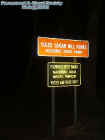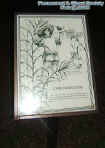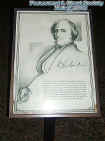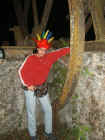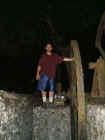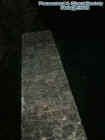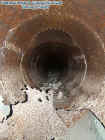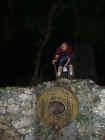|
|
||
|
The Yulee Sugar Mill was part of a 5,100 acre plantation which had roughly 1,000 slaves in 1849. Crops that were grown here were sugar cane, citrus, produce, cotton just to name a few. Most of the plantation was deeded to Yulee by Spain during Spanish occupation. The sugar mill produced sugar, syrup, molasses used in making rum for 13 years. Long before a sugar mill existed here it was home to the Seminole and Calusa Indians. Signs of this are told from excavations that revealed axes, canoes, cooking pots, and many other artifacts. Yulee was one of the first white settlers to this area so many hardships would have to be conquered here. The mill took 3 years to build from 1849 to 1851 mainly by a man named Joseph Hale who later became a pioneer settler of Brooksville. Brooksville not to far away is one of the most historic towns in the state of Florida. The mill was built of limestone which is rare cause most structures during that time were built of coquina. Joshua Stafford introduced Citrus trees in the 1850s to the area perhaps the first in the county to the plantation. A sailing vessel brought the boiler, kettles, crushing machinery and steam engine from NY. It had a forty foot long building which housed the boiler. There was also a well, molasses curator house, giant chimney, and other structures all built by the slaves during that time. The slaves quarried the limestone in the area and brought it to the site to build the mill for Yulee. David Levy Yulee was the State of Florida's first Senator he also helped write Florida's state constitution. Yulee also was responsible for building the states first Cross Railroad. During the civil war he provided the Confederate troops sugar which led to the Union troops burning down his mill and mansion which sat on the Homosassa River in 1864. I am not sure if anybody died but during the civil war I know for a fact that the entire mill operation was abandoned. I know that a Union Naval Force captured ammunition and supplies at the Yulee family mansion on Lathleo Island in the middle of the Homosassa River. A slave that worked on the plantation sold out to the Union side and was spying for them. This tip off of course led to the Union Soldiers to put an end to this plantation. I do know Yulee was captured and put 2 years in prison for supplying the Confederates with supplies. Today what is left of the plantation is roughly 6 acres and a picnic area. The plantation sits on a busy road and next to a bar where honestly I seen many trouble makers here. I actually feel bad because I know the site has been disrespected and probably should be better protected. This is also the state of Florida's smallest state parking with only 6 acres to explore. In 1923 the site was presented by Claude Root to the citrus county federation of Woman's Clubs then deeded to the state in 1953. In 1970 it was placed on the National Register Of Historic Places. © By Rick-AngelOfThyNight
In accordance with Title 17 U.S.C. Section 107, any copyrighted work in this message is being distributed under fair use without profit or payment to those who have expressed a prior interest in receiving the included information for non-profit research and educational or criticism purposes only. Notwithstanding the provisions of sections 106 and 106A, the fair use of a copyrighted work, including such use by reproduction in copies or phone records or by any other means specified by that section, for purposes such as criticism, comment, news reporting, teaching (including multiple copies for classroom use), scholarship, or research, is not an infringement.
|
||
|
|
|






